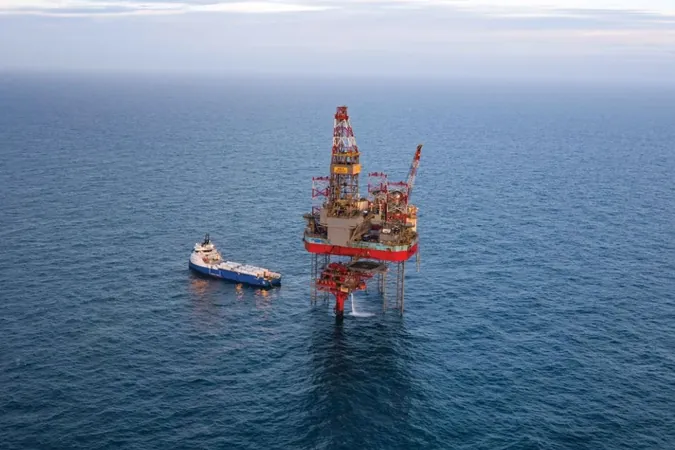
Unearthing the Secrets of the Surf: How Infrasound Could Transform Ocean Monitoring
2025-09-02
Author: Liam
Discovering the Hidden Symphony of Waves
Imagine the calming sound of waves lapping at the shore, a familiar soundtrack for beachgoers. But beneath this familiar melody lies a rich tapestry of sounds that we can't hear—low-frequency vibrations known as infrasound, traveling through air and ground.
The Breakthrough Study at UC Santa Barbara
A pioneering research team from UC Santa Barbara has embarked on a groundbreaking study to decode these sub-audible signals generated by breaking ocean waves. Their recent findings, published in the *Geophysical Journal International*, reveal the acoustic footprints of these waves, providing insights into real-time sea conditions through seismic and acoustic data.
What is Infrasound?
Infrasound refers to sound waves that have frequencies below 20 hertz—so low that they slip past human ears yet carry vast amounts of energy. According to senior author Professor Robin Matoza, infrasound can result from a tapestry of natural phenomena, including everything from volcanoes to ocean storms. Understanding these signals will enable scientists to glean critical information about various Earth processes.
Decoding the Language of the Ocean
The researchers utilized an array of sensors, dramatically enhancing their ability to capture detailed infrasound data. When waves crash, they generate distinct acoustic signals—like the snap of a clapperboard on a film set—which aligned perfectly with visual recordings of the waves in action. The team managed to extract repetitive pulse signatures from the surf, uncovering a clear correlation between the infrasound signals and actual wave heights.
Unexpected Insights on Surf Sounds
Interestingly, while the waves produce sounds we associate with a beach setting, the overwhelming majority of the energy is emitted as infrasound. This hidden roar was found to have a volume comparable to a bustling restaurant or busy traffic, suggesting a rich auditory landscape beneath the surface.
Unlocking Future Research Possibilities
This research sparks intriguing questions: Is the phenomenon of synchronized infrasound unique to this particular beach? Can equivalent waves elsewhere, like those in Tahiti, produce similar signals? As conditions such as tides and winds fluctuate, how does this affect the generated infrasound?
Matoza and his team are excited to delve deeper into these mysteries, armed with the advantage of conducting research just a short distance from their campus. This proximity allows for quick deployments and iterative testing, significantly benefiting the students involved in this vital research.
Towards a Revolutionary Monitoring System
The long-term vision? To develop a comprehensive method for assessing ocean conditions exclusively through infrasound and seismic data. This approach could transform traditional monitoring systems, especially in challenging weather conditions, providing a clearer understanding of our dynamic oceans.









 Brasil (PT)
Brasil (PT)
 Canada (EN)
Canada (EN)
 Chile (ES)
Chile (ES)
 Česko (CS)
Česko (CS)
 대한민국 (KO)
대한민국 (KO)
 España (ES)
España (ES)
 France (FR)
France (FR)
 Hong Kong (EN)
Hong Kong (EN)
 Italia (IT)
Italia (IT)
 日本 (JA)
日本 (JA)
 Magyarország (HU)
Magyarország (HU)
 Norge (NO)
Norge (NO)
 Polska (PL)
Polska (PL)
 Schweiz (DE)
Schweiz (DE)
 Singapore (EN)
Singapore (EN)
 Sverige (SV)
Sverige (SV)
 Suomi (FI)
Suomi (FI)
 Türkiye (TR)
Türkiye (TR)
 الإمارات العربية المتحدة (AR)
الإمارات العربية المتحدة (AR)